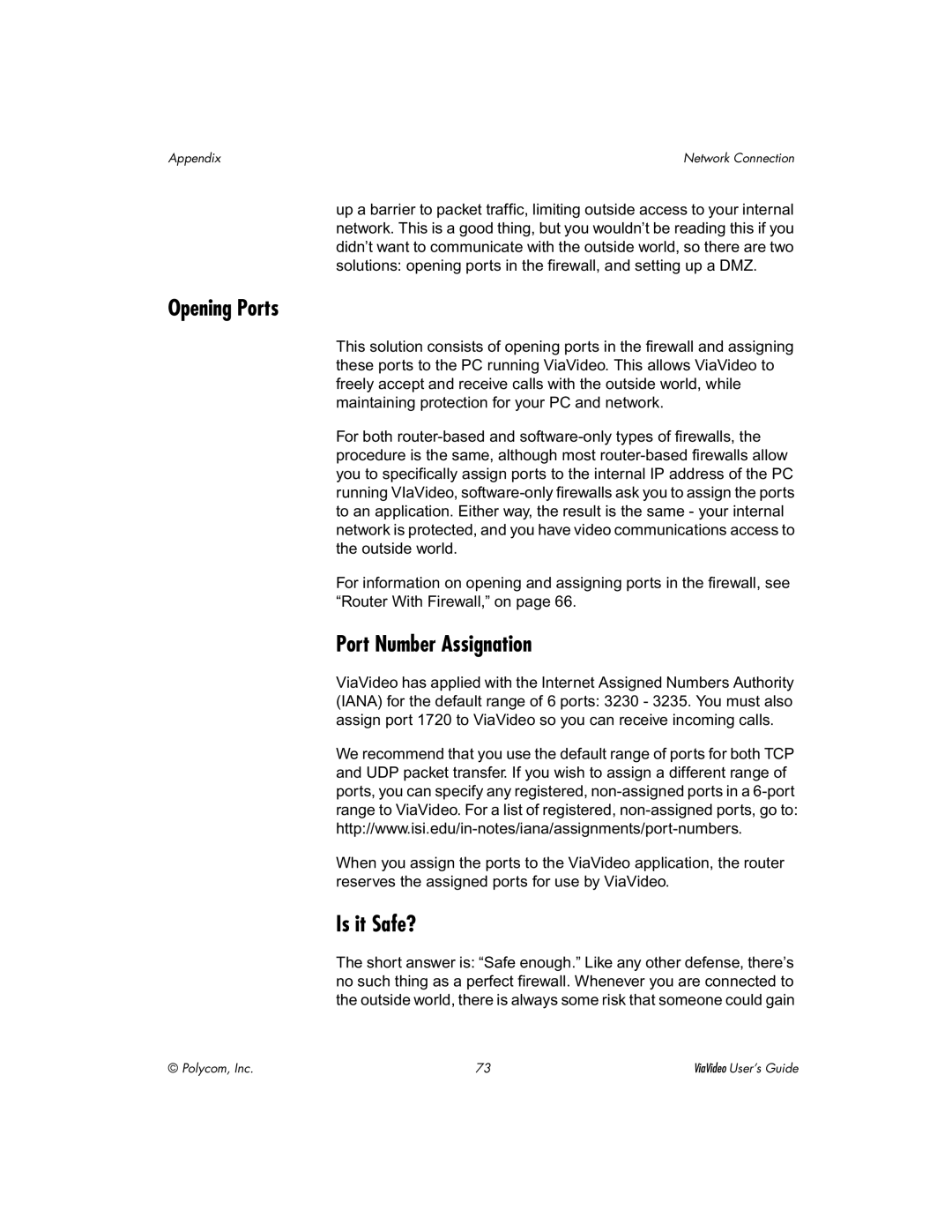Appendix | Network Connection |
up a barrier to packet traffic, limiting outside access to your internal network. This is a good thing, but you wouldn’t be reading this if you didn’t want to communicate with the outside world, so there are two solutions: opening ports in the firewall, and setting up a DMZ.
Opening Ports
This solution consists of opening ports in the firewall and assigning these ports to the PC running ViaVideo. This allows ViaVideo to freely accept and receive calls with the outside world, while maintaining protection for your PC and network.
For both
For information on opening and assigning ports in the firewall, see “Router With Firewall,” on page 66.
Port Number Assignation
ViaVideo has applied with the Internet Assigned Numbers Authority (IANA) for the default range of 6 ports: 3230 - 3235. You must also assign port 1720 to ViaVideo so you can receive incoming calls.
We recommend that you use the default range of ports for both TCP and UDP packet transfer. If you wish to assign a different range of ports, you can specify any registered,
When you assign the ports to the ViaVideo application, the router reserves the assigned ports for use by ViaVideo.
Is it Safe?
The short answer is: “Safe enough.” Like any other defense, there’s no such thing as a perfect firewall. Whenever you are connected to the outside world, there is always some risk that someone could gain
© Polycom, Inc. | 73 | ViaVideo User’s Guide |
